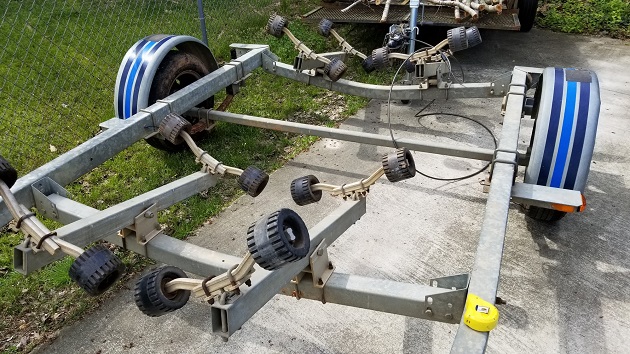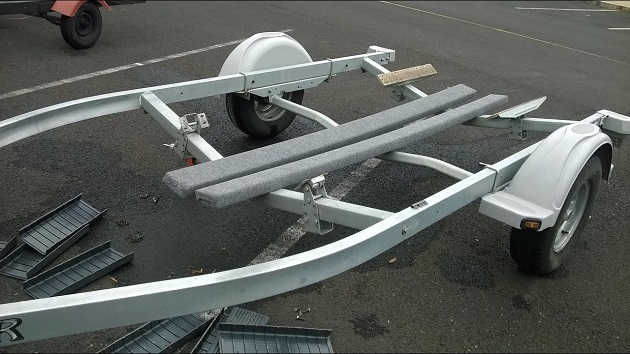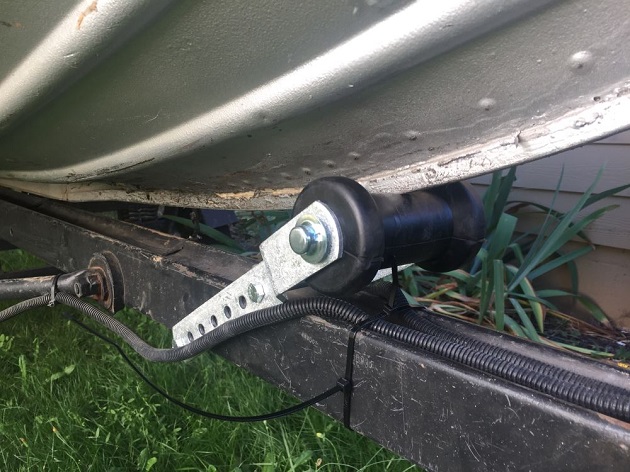Boat Trailer Brackets Guide
While being on a boat can make someone seasick, the experience of boating alone and the benefits from it can sometimes be enough to go boating despite experiencing sickness. If you just devote yourself to the experience and try to enjoy it you can reap many of the benefits that boating offers. Not only do you get to breathe fresh air, but you also get to breathe salty air. Salty air can help you absorb oxygen, and being near water, in general, helps us be calmer and happier alongside being beneficial to our physical health. You can tune out completely and relax after a hard-working week.
Boating lets you have a more fun time with family and friends while it makes for great exercise too. Handling a boat and course-plotting around a busy inlet can get you going and make for a great day’s worth of exercise. But just as you would use a trailer to transport farming supplies or warehouse equipment you need a boat trailer to transport your boat to the dock. Sometimes, you also need extra supplies to make that boating experience a little bit better.
How to Adjust Rollers on Boat Trailer

The best way to adjust the roller for a boat trailer is to have your boat parked at a boat ramp or have it towed down to a car park. Either works, just make sure you have enough clear space to work with so you can properly adjust the trailer bracket.
- When adjusting a trailer roller for your boat, make sure to have the width measurements right first. Measure from the centre of your boat to each strake. After that, just set the height of your boat roller using a string that will run from the front to back.
- The angle should be anywhere from about 5° to 8°. You need to take the measurement from the 2nd roller at the front since each hull has a different entry angle.
- Place the roller about 10-15mm lower and after that just pull the boat back on to ensure it is on the centre of the rollers. Jack up each roller starting from the back until you have them touching the hull of the boat without taking the weight.
- Then, back off the keel rollers with about a quarter or half a turn on the height bolts. Drive your trailer up the road or car park and settle the boat down on it. After that, reset the keel rollers and take the load of the boat together with the front bow roller and self-centring rollers.
- Once all this is done, you should have the boat supported between its strakes and the keel trailer bracket (roller) evenly. You will still have about 5° downslope. If you don’t have it though, you can just repeat step 3 until you’re all set.
Types of Trailer Brackets

HDPE
Rollers that are used for aluminium vessels and trailers are made of high-density polyethylene plastic or HDPE. These rollers can last you a lifetime since they are tough and do not crack or split as easily. HDPE rollers will make launching and retrieving your boat a walk in the park.
Polyurethane
If you have a fibreglass boat your best option is to get polyurethane rollers. These rollers are softer than HDPE ones but they are also strong enough to prevent splits or cracks. In order to get the maximum lifespan of a polyurethane roller, you need to perform proper maintenance regularly.
Rubber
Rubber rollers are usually black in colour and are the most budget-friendly rollers since they have quite a limited lifespan. With constant use, rubber rollers are easy to split, crack or even get a flat spot. You need to take extensive care of them in order for them to last you for as long as they can while withstanding the rigours of the sea.
Self-Centring
Moving on from materials, there are also different styles of rollers that I mentioned above. Starting with self-centring rollers, you get a boat roller that comes with grooves to keep the ship’s hull centre aligned while hauled onto a trailer.
Bow
Bow rollers are used in order to provide the necessary grip for the boat while towing. Bow rollers need to be sturdy and tough to keep all the weight under control.
Wobble
A wobble roller is made so it fits the hull curvature perfectly. A wobble roller can usually carry about 40% of the boat’s mass. This makes these rollers ideal for when you’re travelling long distances with your boat at the back.
Measuring A Trailer Bracket

- Measuring any kind of trailer roller includes starting out with the width and the diameter of the roller. After you’ve measured them, you need to measure the inside diameter of the bushing.
- You will also want to measure the shaft at its widest part as it can help you get a more accurate roller for your trailer. Remember, the bushing inner diameter and shaft diameter are different and this is normal as the roller may need to wobble and do so efficiently. The last thing you need to do is measure the midpoint of the bushing from one edge to the other and you have all the dimensions necessary for a perfectly fitted roller.